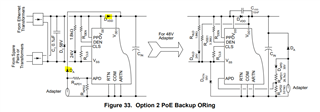Other Parts Discussed in Thread: , TPS23752, TL431
Hi TI,
What is Class Regulator mentioned in page-16 of TPS2375x_datasheet? There are detection, classification... in PoE handshake between PSE and PD. Is the Class Regulator referred to to the Classification?
Regards,
Kok Khuan















